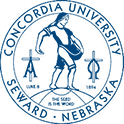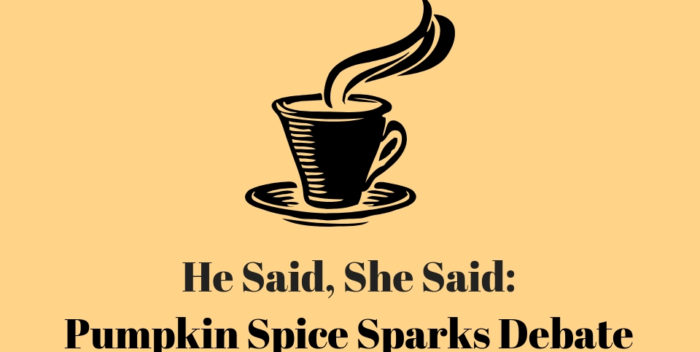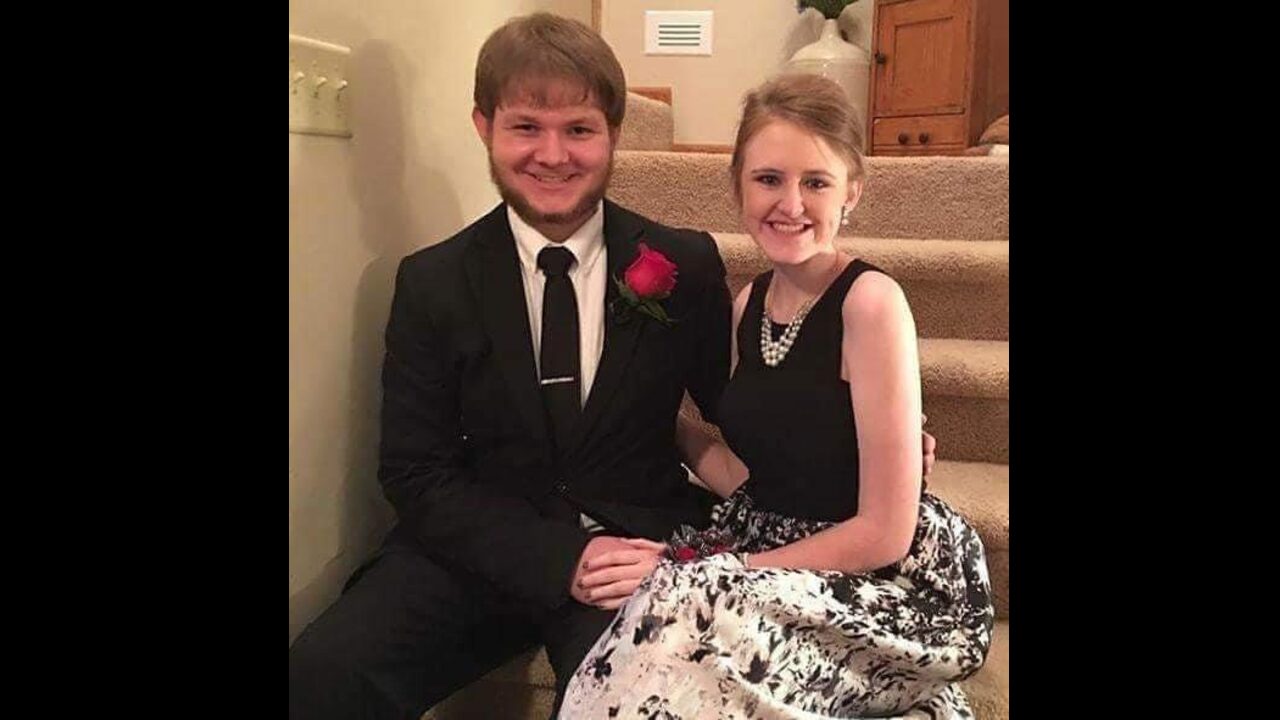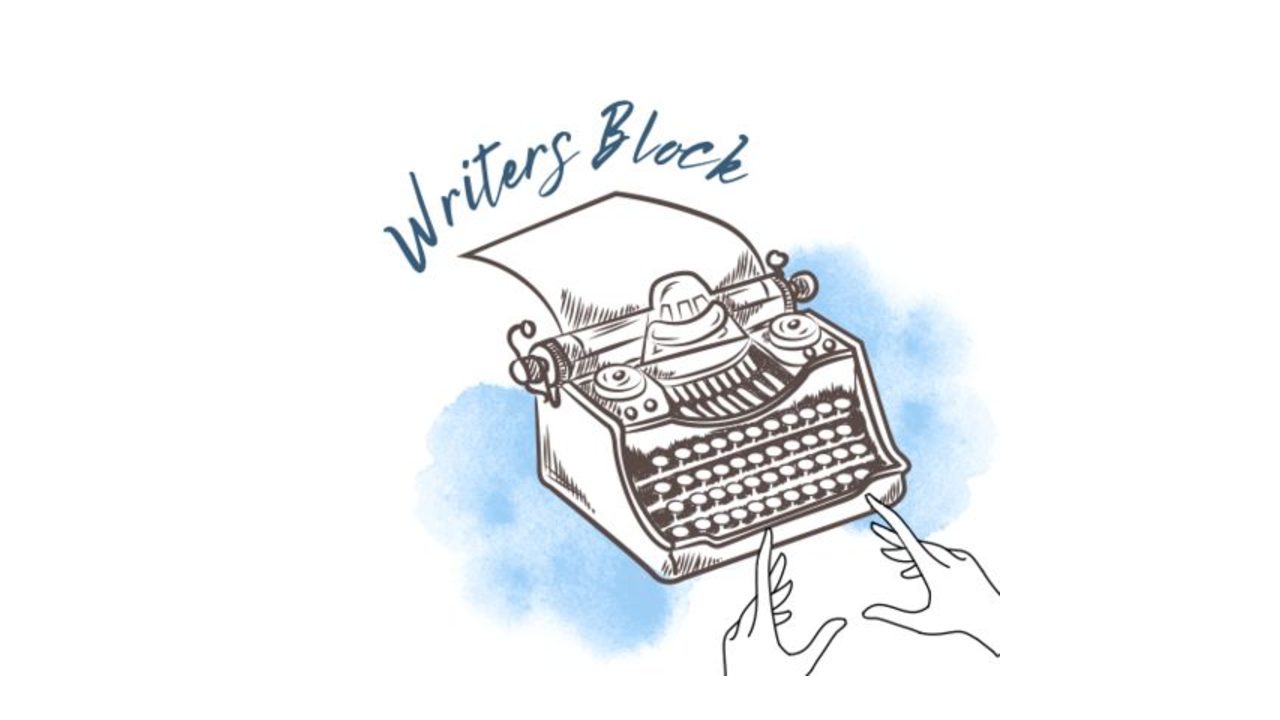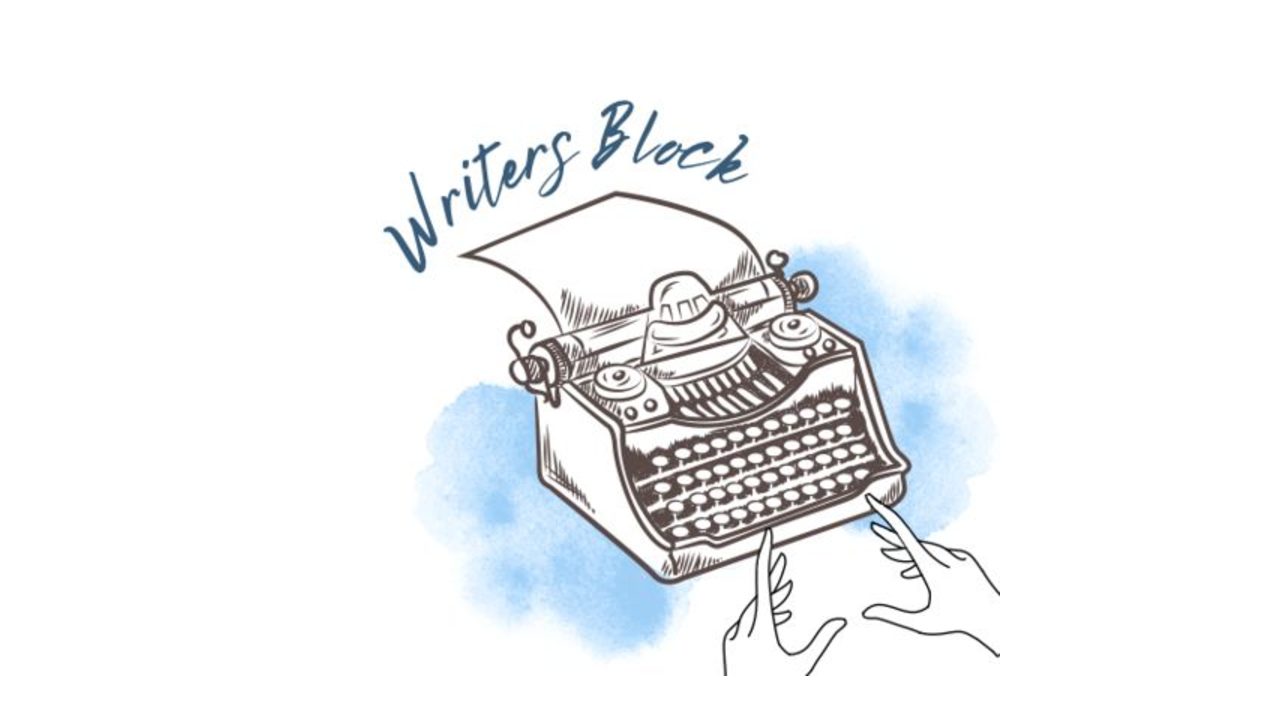He Said, She Said: Pumpkin Spice Sparks Debate
This fall-themed installment of the Sower’s “He Said, She Said” column brings up the important question: Is pumpkin spice (and everything flavored with it) worth all the hype? Two Sower staff members, Benjamin Gordon and Kimberly Sleeper, share their thoughts on the matter.
Benjamin Gordon
We all know the materialist stereotype of the rich pretentious West Coast girl who gets out of her 2018 Ford Mustang, walks into the local Starbucks and takes off the Ray-Bans, buys herself a piping hot Pumpkin Spice Latte, and then revs the engine of her Mustang and drives away. Out of all those brands, one stands out as the biggest symbol of that American materialist stereotype, the pumpkin spice latte. On August 28, Starbucks announced that Pumpkin Spice Latte Season began, once again bringing needless controversy.
The pumpkin spice latte is in a curious position, since other companies’ seasonal drinks, and even other seasonal drinks from Starbucks, slip onto menus without fanfare. The pumpkin spice latte, however, is met with controversy. The cycle goes on year after year. The launch of this drink is specially covered by major news sites, to both the delight and disdain of many.
Why do people have such strong opinions against this drink? Infegy reports in one of their market studies that 77% of people enjoy the drink. This indicates that it is not a matter of the quality of the drink, but of something much deeper than just coffee.
The pumpkin spice latte is popular beverage and is clearly well liked by those who consume it, but to understand the underlying issues, it must be understood who is consuming it.
According to Infegy data, the biggest consumers of the pumpkin spice latte geographically are predominantly the northern Midwest, the West Coast and the East Coast. The Infegy study also identifies the primary consumers as earning an average of $7,000 more in yearly household income compared to the rest of the population. The New York Development Group puts the drink being bought almost equally by both genders, with 47% being men and the 53% women.
These statistics point out that any stereotype against people who drink it is baseless. People tend to associate the drink with women but the data shows that men and women drink the latte almost equally. The data also shows that location has little to do with liking the drink. It in fact simply sells well wherever there is a Starbucks, which happens to be primarily in large towns or cities. There is also an idea that only the wealthy drink it, but the data shows that people from all backgrounds enjoy the latte.
The stereotypes about the people that drink pumpkin spice latte may not ring true but despite that it remains a symbol of American materialism. The pumpkin spice latte is admittedly a want and not a need, though no more than any other caffeinated beverage.
The culture behind making the pumpkin spice latte some sort of symbol of materialism is pointless. America has a materialism problem and enjoys more disposable income than most other nations, but internally seems to condemn certain types of materialism over others. For perspective, the pumpkin spice latte is no different than soft serve cream or iced tea or any other coffee, yet it is crucified like it is the cause of all America’s materialist problems.
Kimberly Sleeper
I have a secret; I have the most unpopular opinion of all unpopular opinions: I think anything pumpkin spice is disgusting.
Don’t get me wrong, I love fall. I love crunching through leaves on the sidewalk and going to haunted houses. I especially love discounted spooky candy after Halloween. But I just cannot back up the fake flavor that takes over the season like the Plague.
Firstly, pumpkin spice tastes nothing like what it is supposed to mimic: grandma’s creamy pumpkin pie or soft pumpkin bread with brown sugar, cinnamon, nutmeg and cloves. I would equate pumpkin spice flavored food to grape-flavored Dum-Dums; they are not inherently bad, per se, but absolutely not authentic or what they are intended to taste like. Pumpkin spice is truly a fake fan of pumpkin.
Pumpkin spice, like Christmas decorations, comes far too early, and sticks around much longer than you want it to. Twinkies, Cheerios, margarine, protein powder and even dog treats? Also, hand sanitizer, soap and candles? Pumpkin is not a scent you should strive to have around you. I can confidently say that when I carve a jack-o-lantern and scoop out the insides of the pumpkin, I wash it off of my hands as soon as humanly possible. It is not a pleasant scent or texture.
We’ve gone too far, fall. It’s time to wind it back and appreciate the little things, like shorter lines at Starbucks and bundling up in your favorite scarf.
If you are in need of warm drink that makes your taste buds explode with the flavors of fall, I suggest apple cider or hot chocolate with toasted marshmallow flavor.
Nothing compares to apple cider at Vala’s Pumpkin Patch, best sipped while waiting in line for the hayrack ride. Hot chocolate with marshmallow flavor tastes like a favorite fall bonfire snack: s’mores.
Step aside, pumpkin spice. It’s time to make way for the real, authentic flavors and scents of fall.

